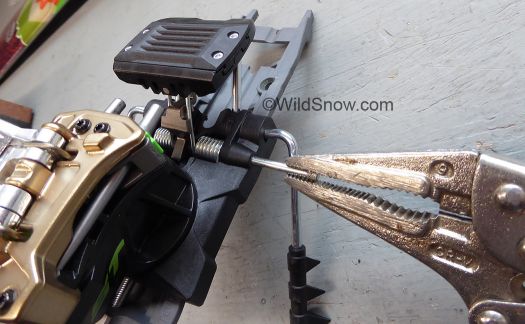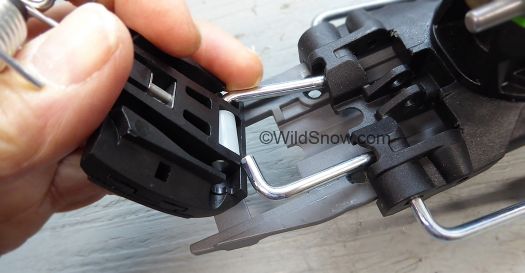I’ve always been fascinated by surgery. Why not? If during a long athletic career you’re going under the knife more times than you can count, you might as well have some interest in what happens after the cold crisp feel of the IV push — before the OR ceiling fades from view. I wasn’t sure if my ski bindings feel the same way. I asked, they seemed to agree so I went for it, without anesthesia. Amazing how brave injection molded plastic is.
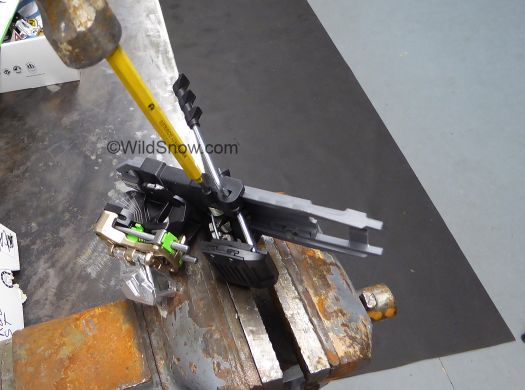
Overheard in orthopaedic operating theater: “We need a bigger hammer.” Step one, pin punch main axle (from smaller end). Click all images to enlarge.
The Dynafit Radical brake weighs 100 grams and is somewhat vestigial if you’re using this grabber for 100% ski touring. Or perhaps more importantly, if you freeride tour without brakes because your skis are too wide or too narrow for your bindings, you know who you are. Oh, and perhaps you simply don’t like fiddling with the brake every time you change modes? Ok, let’s excise it.
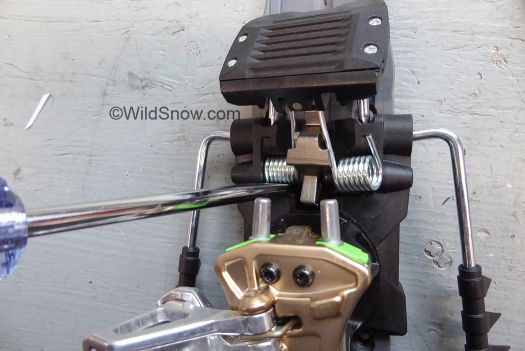
Pry out the spring after a small dose of boil temperature water. Beware, when they pop out a small bushing will fly away so cover with a rag or something while you do the deed.
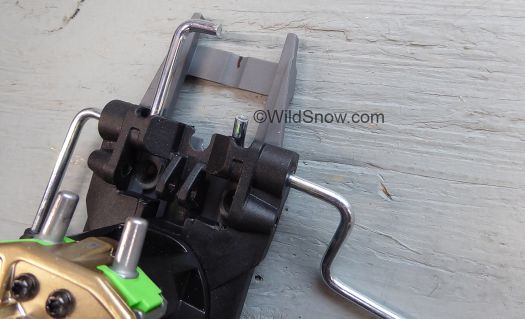
Removing arms from the binding base is tougher. Be sure to pour boil temperature water over this area of the base for a moment, you’ll find the arms pull out much easier after you do that.
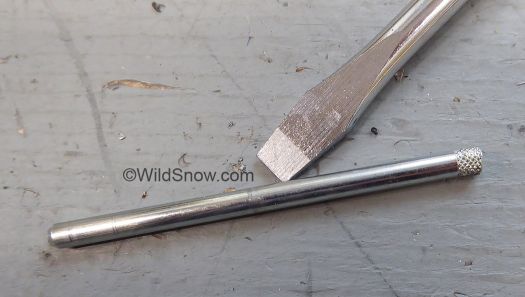
You’ll probably want to re-insert the axle and anti-rotation catch, but this may be optional. If you decide to do so, be sure the axle gets inserted from the side it was removed, with the knurled-larger end going in last so it doesn’t damage the bore.
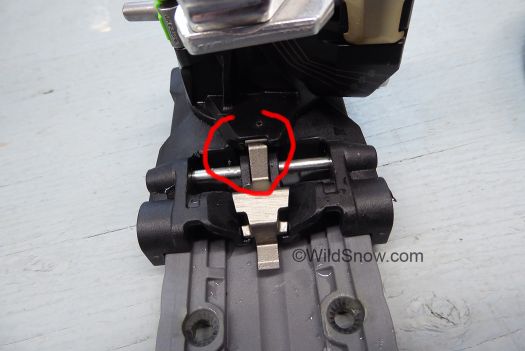
The anti rotation will still work if you need it. I’d suggest first trying without. The exposed moldings on the base will probably pick up ice if you’re using heel-flat-on-ski mode. So, bandage the surgery area with a DIY stomp block or other sort of plastic covering.
WARNINGS: This mod is more a proof of concept than anything else. If you do choose to go for it, be advised that re-assembling everything would be extremely difficult. In other words, this may not be a reversible mod. Also, you’ll probably want a stomp block or at least some sort of plastic covering to prevent ice buildup on the exposed moldings. At the least, a layer of duct tape? If you got this far, you’ll figure it out.
Shop for Dynafit Radical 2 ski touring binding.
troubleshooting test that will go away
WildSnow.com publisher emeritus and founder Lou (Louis Dawson) has a 50+ years career in climbing, backcountry skiing and ski mountaineering. He was the first person in history to ski down all 54 Colorado 14,000-foot peaks, has authored numerous books about about backcountry skiing, and has skied from the summit of Denali in Alaska, North America’s highest mountain.

